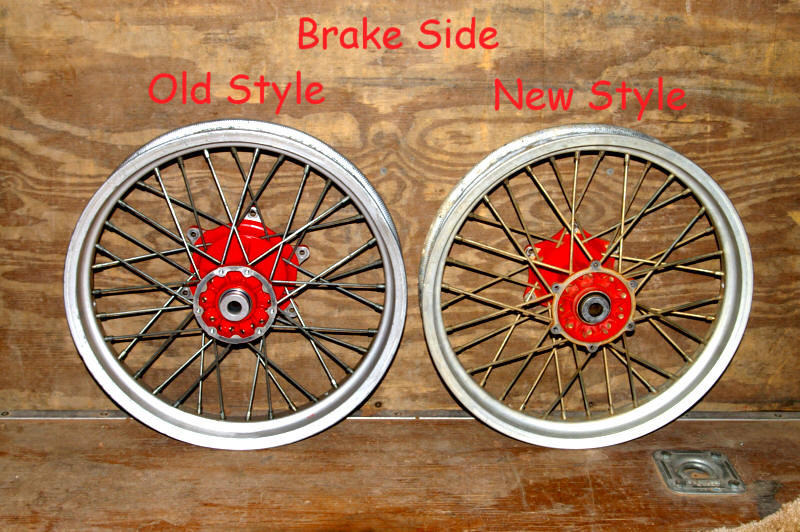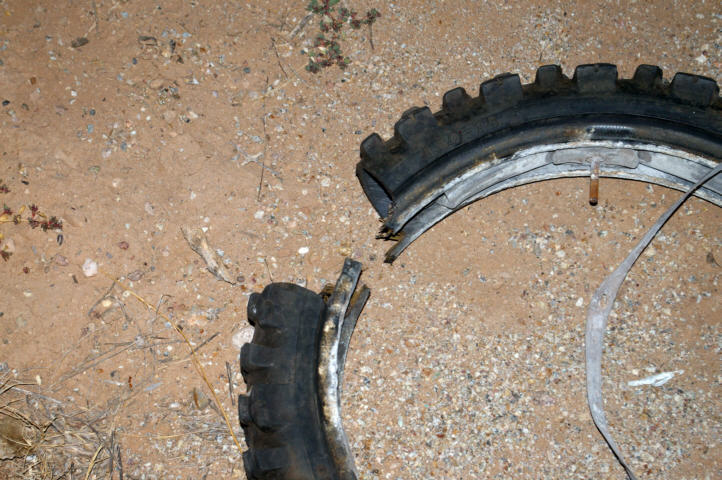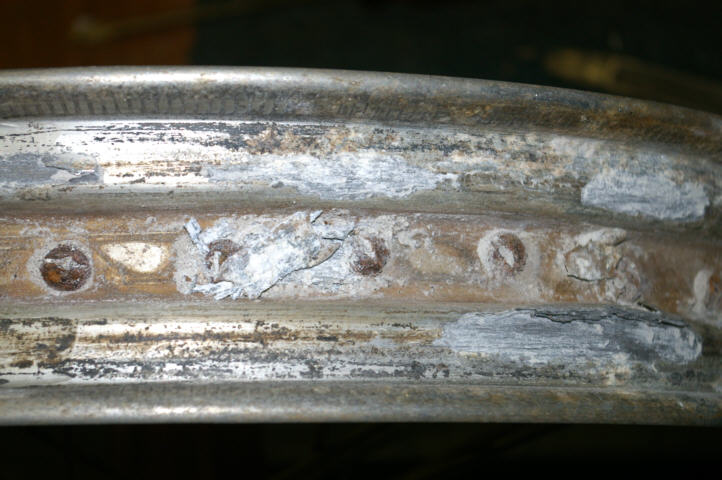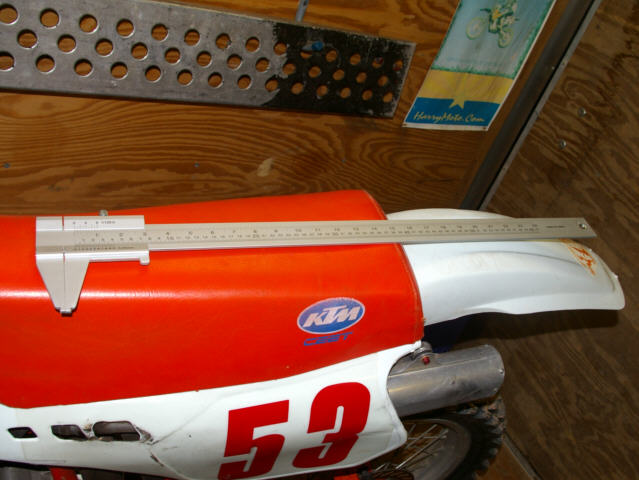
KTM introduced the red hubs in 1989 on all bikes.
The smaller bikes (250 & 125) switched to the new style rear hub in 1990.
The big bores (350, 500, 550) switched in 1992.
Updated April 9, 2009 for clarity
So how can you tell which red hub you are looking at? The easiest way is to look at the rear brake rotor.
The early style wheel uses a 6 out of 9 pattern, see picture. This is very evident even in a pretty bad e-bay picture.
Less evident is the fact that the late model hub has a brake rotor support ring that engages the rotor all the way
around the inside, while the early hub bolts the rotor to a flat surface. Notably, the early hub uses screws directly into the hub body,
while the late model hub uses through holes, and nuts on the back of the brake rotor screws.

Now, on the sprocket side you can still see the differences, but they are more subtle and harder to see on a bad e-bay picture.
The older hub has a much larger bolt circle, and the sprocket is supported on the inside on 6 small lands.
The late model hub uses a smaller circle and has a 360º lip for sprocket support.

Speaking of sprockets, how do you find new sprockets for your old hub?
If you have the new style hub, it's the same sprocket all the KTM's use.
If you have the older style hub, go to Sprocket Specialists, you can google them and find their website. They
know what they have, and they have sprockets for the old hubs. There are a few places that list the old bikes
but when your sprocket shows up it's a late model sprocket and you have to go through all that calling and
convincing and returning... voice of experience. Send them to this page to see what's going on, that's what
I did, and they were quite nice and refunded all when they saw their error.
Skip all the hassle: get your old style sprocket from Sprocket Specialists!
Measurements:
For all you fellow geeks out there, here are the numbers.
|
Red hubs and later |
mm | mm | |
| Old | New | ||
|
Sprocket bolt circle |
190 | 150 | |
|
Sprocket support lip outside diameter |
165 | 125 | |
|
O/A Width (size inside swingarm) |
175 | 180 | |
|
Disc land on hub to Sprocket land on hub |
146 | 156 | |
|
Disc land on hub to edge of hub |
11 | 11 | |
|
Sprocket land on hub to edge of hub |
18 | 13 | |
|
Spacer hickness |
14 | 7 | |
|
Rotor bolt circle |
104 | 125 | |
|
Sprocket thickness = 6mm |
|||
|
Rear rotor thickness = 4mm |
Gee Whiz!
Old style wheel assemby at left weighs 11 pounds, new style weighs 10 pounds. But before anyone makes any conclusions,
they should know that the old rig is in perfect condition. The new rig, however, has extremely severe corrosion of the hoop.
It's hard to tell exactly, but I'd estimate between 10 and 40 percent of the material is gone! Hey, I did say 'extremely severe', yes?
Couldn't break the bead even using a large C-clamp so I cut the tire off, breaking the bead wire a strand at a time by driving a big
screwdriver into the wire bundle. What a pain in my behind that was!!
<ADDED> So I got a good scale, and I had a chance to have both styles of wheel apart:
Old style hub with spokes and zipties, no hoop = 5 pounds, 4.8 ounces
New style hub with spokes and zipties, no hoop = 4 pounds, 14.0 ounces
So the total difference in weight is 6.8 ounces. Authoritative. 8^)
This is without tire, rimlocks, spoke nipples, hoop, tube.

Cut tire. No, I wasn't kidding. This thing was STUCK!!!

And here is some of the corrosion. It's been wire brushed, I got a huge amount of white poofy
ex-aluminum off this wheel hoop. Funny, it looked fine on e-bay! The visible part of the wheel looks perfect.

And finally, speaking to my fellow geeks out there in Moto-land; this vernier caliper cost me a whooping
9 dollars and change at Harbor Freight. Yes, it's a POS. No, I don't have any other 610mm calipers.
It works fine for what I needed it for.